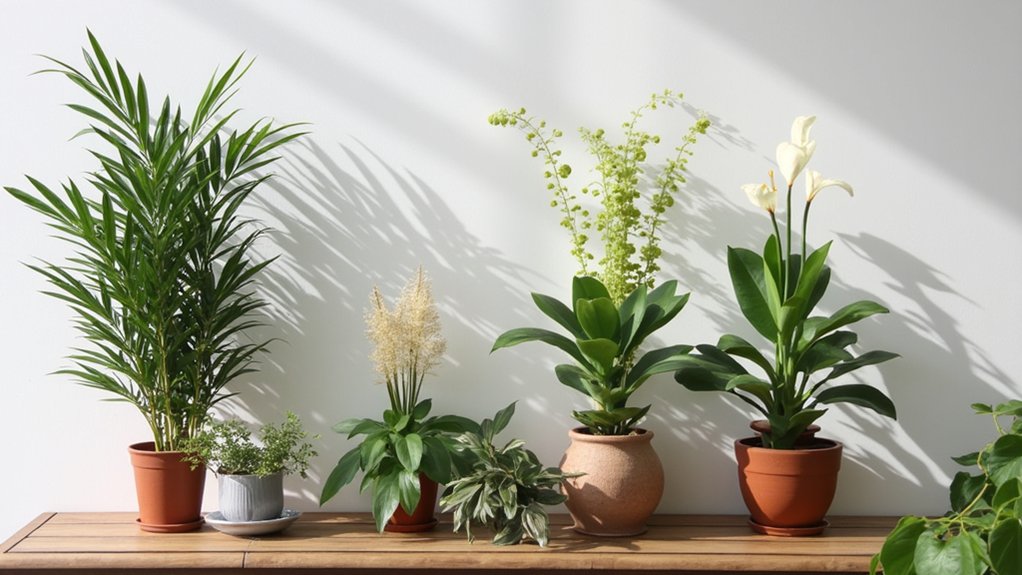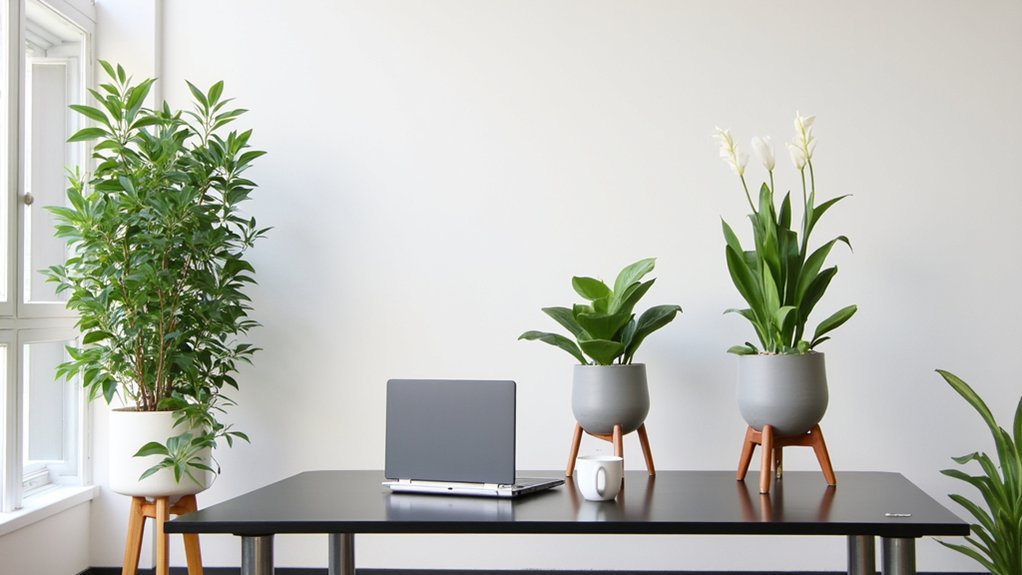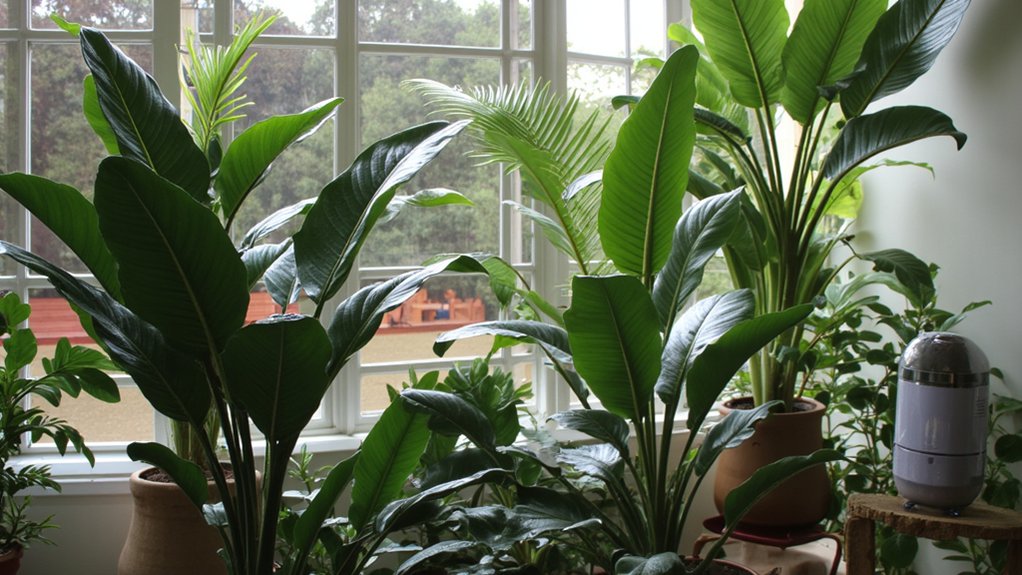According to NASA research, indoor plants can remove up to 87% of air toxins within 24 hours. You’ve likely noticed how a room with plants feels fresher, but their benefits extend far beyond basic air filtering. From boosting your productivity by 15% to reducing stress levels through simple daily interaction, these green companions offer surprising advantages that can transform your living and working spaces. Let’s explore how these natural powerhouses can enhance your daily life.

Contents
Natural Air Purification: Your Living Filter System
Nature’s brilliance shines through in the remarkable air-purifying abilities of indoor plants. You’ll find these green companions actively filtering toxins like benzene, formaldehyde, and trichloroethylene from your indoor air through their leaves and root systems.
You don’t need an extensive collection to make a difference. Just one 6-foot houseplant per 100 square feet can effectively cleanse your air. Plants like spider plants and peace lilies work round the clock, converting carbon dioxide to oxygen while trapping airborne particles in their foliage.
For maximum filtration, you’ll want to position your plants strategically near potential pollutant sources, such as printers or fresh paint.
Mental Health and Stress Reduction

Beyond their impressive air-cleaning capabilities, indoor plants offer remarkable benefits for your psychological well-being. Studies show that just 15 minutes of interaction with houseplants can reduce your stress hormones by up to 20%, while improving focus and productivity.
You’ll find that placing 3-4 small plants within your direct line of sight can lower anxiety levels during work hours. Common varieties like snake plants and pothos are particularly effective, as their rhythmic patterns and gentle movements naturally calm your nervous system.
Consider positioning plants near your desk or meditation space, where you’ll benefit most from their stress-reducing properties.
Increased Productivity and Focus in Home Offices

When strategically placed throughout your home office, indoor plants can boost productivity by up to 15% while enhancing mental clarity during focused work sessions. Position leafy plants within your peripheral vision, about 3-4 feet from your workstation, to maximize their attention-restoring benefits.
You’ll notice the biggest productivity gains by incorporating low-maintenance plants like snake plants or pothos near your computer setup. These natural elements help reduce eye strain and create micro-breaks when you glance at them, allowing your brain to reset every 20-30 minutes without disrupting your workflow.
Better Sleep Through Oxygen Production
Indoor plants release oxygen throughout the night while you sleep, creating an ideal environment for deeper, more restful slumber. Plants like snake plants and aloe vera can boost oxygen levels in your bedroom by 25-30% during nighttime hours.
You’ll want to position 2-3 medium-sized plants about 6-8 feet from your bed for optimal air circulation. During photosynthesis, these natural air purifiers convert carbon dioxide into fresh oxygen, which helps regulate your breathing patterns while you rest.
Consider adding peace lilies or spider plants to your bedroom, as they’re particularly effective at night-time oxygen production and require minimal maintenance.
Humidity Control for Respiratory Health

Living rooms and bedrooms often suffer from dry air that can irritate your respiratory system, but strategically placed houseplants naturally increase humidity levels through transpiration. You’ll notice the most benefit when you group three to four plants together, creating a microclimate that can raise local humidity by 10-15%.
For ideal respiratory benefits, you’ll want to place moisture-loving plants like Boston ferns, peace lilies, or spider plants in your bedroom. These varieties release up to 95% of the water they absorb, and you’ll breathe easier as they combat dry air, especially during winter months when heating systems reduce indoor humidity.
Healing Benefits and Pain Management
Research has shown that certain houseplants contain natural compounds that can reduce pain and inflammation. You’ll find that aloe vera, for example, contains acemannan, which helps heal minor burns and cuts when applied directly to your skin. Just break off a leaf and squeeze out the gel-like substance.
Lavender’s aromatherapeutic properties can reduce headache intensity by up to 72% within 15 minutes of exposure. For best results, place your lavender plant in direct sunlight, about 2-3 feet from where you typically experience head pain. The essential oils released naturally into the air can provide consistent relief throughout the day.
